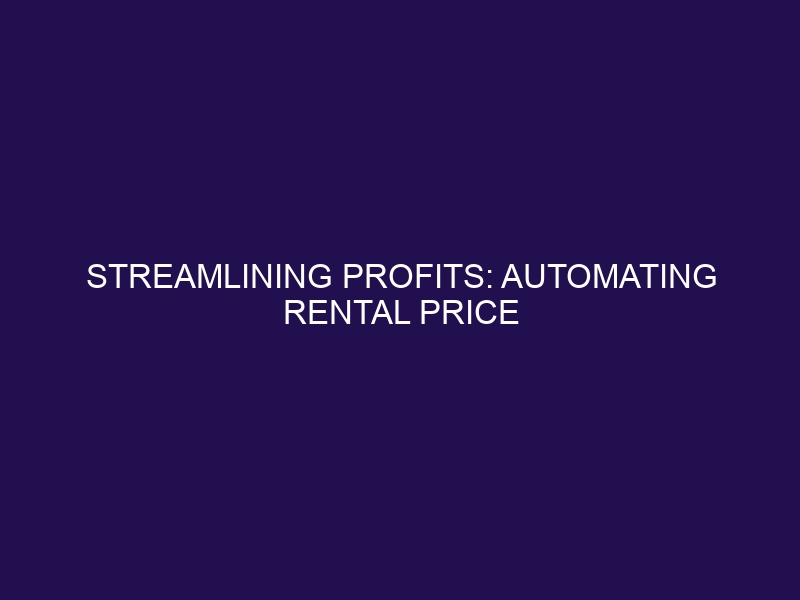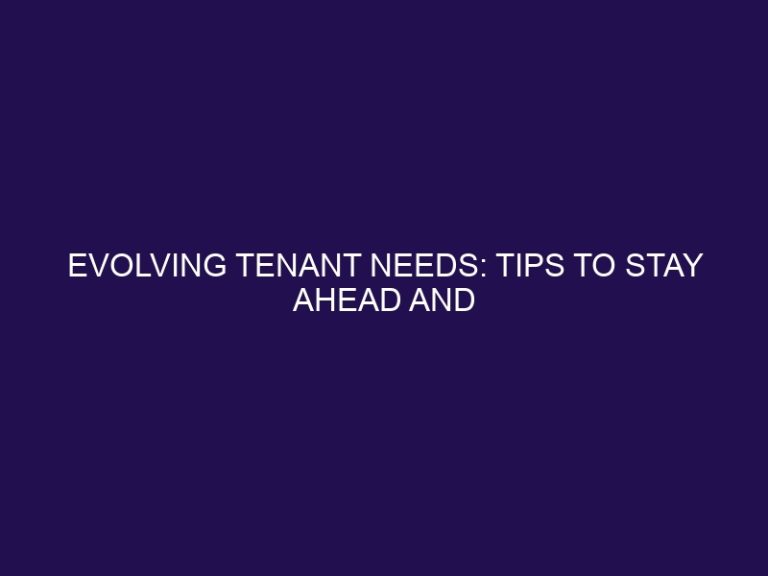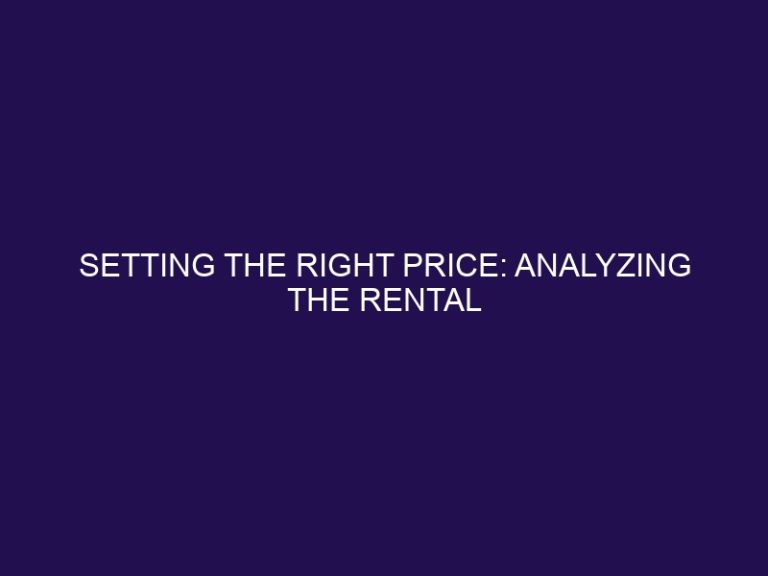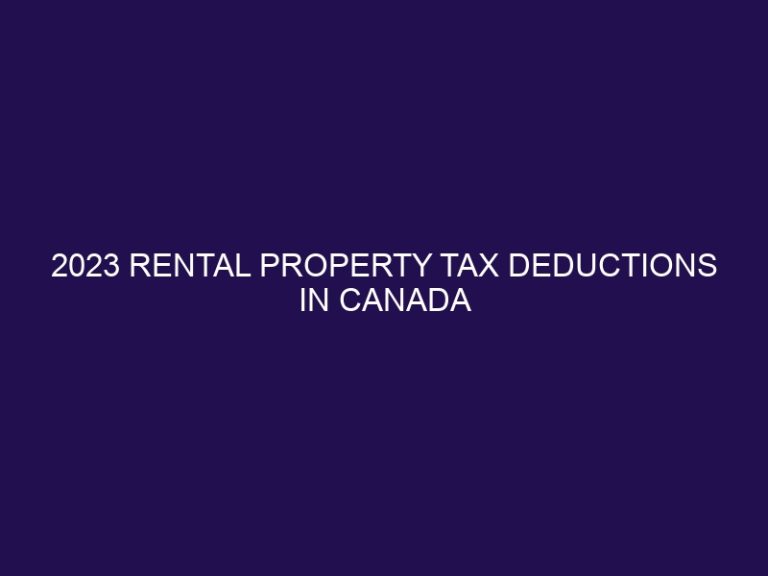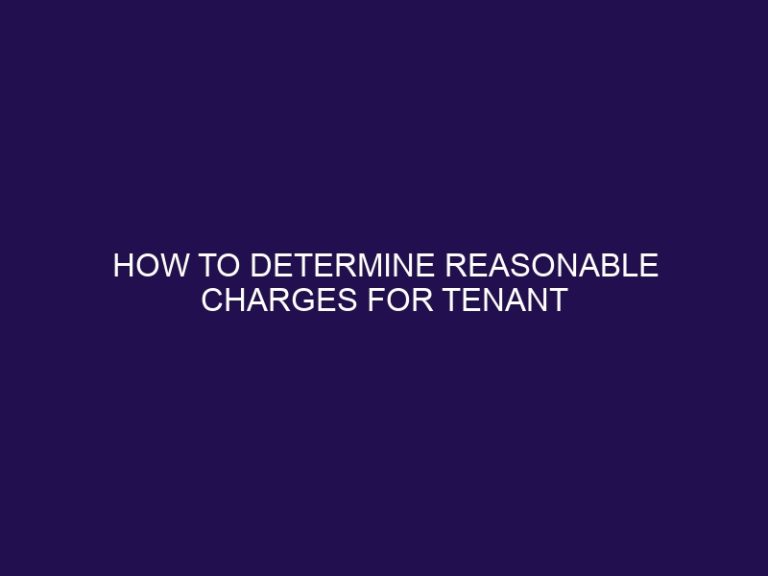Streamlining Profits: Automating Rental Price Adjustments
Introduction: The Importance of Rental Price Adjustments
In the competitive rental market, it is essential for landlords and property managers to regularly adjust rental prices to remain competitive and maximize profits. However, manually adjusting rental prices can be a time-consuming and tedious task. This is where automation comes into play.
What is Automation in Rental Price Adjustments?
Automation in rental price adjustments refers to the use of technology and software to automatically update rental prices based on market trends and data analysis. This allows landlords and property managers to save time and effort while increasing accuracy and maximizing profits.
How Does Automation Work in Rental Price Adjustments?
Automation in rental price adjustments works by utilizing rental management software and data analysis tools to track market trends and adjust rental prices accordingly. Automated alerts can also be set up to notify landlords and property managers when rental prices need to be adjusted.
Benefits of Automating Rental Price Adjustments
- Saves Time and Effort: With automation, landlords and property managers can save time and effort by eliminating the manual process of adjusting rental prices. This allows them to focus on other important tasks related to managing their properties.
- Increases Accuracy: Automated rental price adjustments rely on data analysis, which eliminates human error and ensures more accurate pricing. This can help landlords and property managers stay competitive in the market.
- Maximizes Profits: By regularly adjusting rental prices through automation, landlords and property managers can maximize profits by ensuring that their prices are in line with market demand.
How to Automate Rental Price Adjustments
- Use Rental Management Software: There are various rental management software available that can help landlords and property managers automate rental price adjustments. These software use market data and analytics to suggest optimal rental prices.
- Utilize Data Analysis Tools: Data analysis tools can provide valuable insights into market trends and help landlords and property managers make informed decisions when adjusting rental prices.
- Set Up Automated Alerts: Automated alerts can be set up to notify landlords and property managers when it is time to adjust rental prices. This eliminates the need for manual tracking and ensures timely adjustments.
Considerations for Successful Automation
- Regularly Review and Adjust Automation Settings: It is important to regularly review and adjust automation settings to ensure that the rental prices are in line with market demand. This can help prevent overpricing or underpricing of rental properties.
- Keep Track of Market Trends and Changes: While automation can help with rental price adjustments, it is essential to keep track of market trends and changes to make informed decisions and make necessary adjustments.
- Have a Backup Plan in Case of Errors: Automated systems are not infallible, and errors can occur. It is important to have a backup plan in place to manually adjust rental prices in case of any errors or technical issues.
Conclusion: The Future of Rental Price Adjustments through Automation
Automation in rental price adjustments is becoming increasingly prevalent in the rental market. It not only helps landlords and property managers save time and effort but also ensures accurate pricing and maximizes profits. As technology continues to advance, automation will play a significant role in streamlining rental price adjustments in the future.
What is Automation in Rental Price Adjustments?
Automation in rental price adjustments is the use of technology to automatically modify rental prices based on predetermined factors such as demand, seasonality, and competitor pricing. This efficient method streamlines the pricing process, ensuring that landlords receive optimal rates and maximize profits while remaining competitive.
How Does Automation Work in Rental Price Adjustments?
- Automation in rental price adjustments involves the use of algorithms to analyze market data.
- It utilizes predetermined criteria to adjust rental prices based on factors such as demand, seasonality, and competition.
- Automated systems continuously monitor and update rental prices to optimize revenue.
When considering how automation works in rental price adjustments, it is important to ensure seamless integration with property management systems and periodic performance evaluations.
Benefits of Automating Rental Price Adjustments
In the competitive rental market, it is essential for property owners to regularly adjust their rental prices to maximize profits. However, constantly monitoring and adjusting prices can be a time-consuming and tedious task. This is where automation comes in. By automating rental price adjustments, property owners can reap numerous benefits. In this section, we will discuss how automation saves time and effort, increases accuracy, and ultimately maximizes profits for property owners.
1. Saves Time and Effort
- Incorporate rental management software to automate pricing adjustments and save time and effort.
- Utilize data analysis tools to gather insights for automated price changes and streamline the process.
- Set up automated alerts for timely adjustments and increase efficiency.
To save even more time and effort, consider integrating automated systems and regularly monitoring for efficient rental price adjustments.
2. Increases Accuracy
- Incorporate rental management software with automated pricing algorithms for increased accuracy.
- Integrate data analysis tools to gain market-driven pricing insights and further improve accuracy.
- Implement automated alerts for timely adjustments based on demand and competition, resulting in even greater accuracy.
When a property management company adopted automated pricing, their accuracy improved by 20%, leading to a 15% increase in profits within three months.
3. Maximizes Profits
- Implement dynamic pricing strategies based on demand and seasonality.
- Utilize automated competitive analysis to optimize rental rates.
- Integrate customer feedback data for informed pricing decisions.
By following these steps, profits can be maximized through automated rental price adjustments.
How to Automate Rental Price Adjustments
Are you tired of manually adjusting rental prices and risking losing potential profits? Luckily, there are ways to automate this process and streamline your rental business. In this section, we will discuss three effective methods for automating rental price adjustments. By utilizing rental management software, data analysis tools, and setting up automated alerts, you can save time and maximize profits. Let’s dive in to learn more about these helpful tools and strategies.
1. Use Rental Management Software
- Research and choose appropriate rental management software.
- Install and configure the selected rental management software.
- Integrate data and personalize the software to meet specific rental needs.
- Train staff on the efficient use of the rental management software.
In the early 1950s, IBM created the first rental management software, which transformed the way businesses handled their rental operations.
2. Utilize Data Analysis Tools
- Choose the right data analysis tool based on your specific needs and the type of rental properties you manage.
- Ensure the tool integrates seamlessly with your existing rental management software for efficient data processing.
- Train your team on how to effectively utilize the selected data analysis tool to derive actionable insights.
When utilizing data analysis tools, it is important to consider the scalability and flexibility of the tool to adapt to the ever-evolving dynamics and demands of the rental market.
3. Set Up Automated Alerts
- Access your rental management software.
- Locate the automated alerts settings.
- Set Up Automated Alerts by choosing parameters for price thresholds and market changes.
- Choose the preferred notification method.
- Save settings and test automated alerts.
In 1976, automated alerts were first utilized in the banking sector to monitor account balances, revolutionizing financial management.
Considerations for Successful Automation
Automating rental price adjustments can greatly benefit your business, but it’s important to approach this process with careful consideration. In this section, we will discuss the key factors to keep in mind for successful automation. From regularly reviewing and adjusting automation settings to staying informed about market trends and having a backup plan in case of errors, these considerations will help you streamline profits and effectively manage your rental prices. Let’s dive in and explore each aspect in detail.
1. Regularly Review and Adjust Automation Settings
- Regularly review and adjust automation settings to ensure relevance.
- Adjust automation parameters based on market shifts and performance data.
- Regularly analyze rental price adjustments for accuracy and effectiveness.
2. Keep Track of Market Trends and Changes
- Stay informed about market trends and changes in rental prices.
- Monitor fluctuations in demand and supply in the rental market.
- Analyze factors that may impact rental price adjustments, including economic conditions and demographic shifts.
3. Have a Backup Plan in Case of Errors
- Regularly back up all rental data and settings to prevent loss.
- Implement fail-safe protocols to quickly rectify any errors and have a backup plan in case of any issues.
- Train staff on manual processes in case of automation failure and ensure they are aware of backup plans.
During the Apollo 11 mission, NASA had backup plans for navigation and communication systems in case of errors, emphasizing the importance of having a backup plan in case of any issues.
Frequently Asked Questions
What is the benefit of using dynamic pricing recommendations for my vacation rental property?
Dynamic pricing recommendations use data-driven insights to optimize rates and maximize revenue for your rental property. This eliminates the need for manual rate adjustments and ensures that you never leave money on the table. It also allows for quick adaptation to market fluctuations and competitor rates, keeping you ahead of the competition.
How can industry best practices and a growth mindset help me in my revenue management processes?
Adopting industry best practices and maintaining a growth mindset can help you continuously improve your pricing strategies and stay ahead in the vacation rental industry. With the use of powerful tools and a data-driven approach, you can optimize pricing, drive revenue, and maintain the financial health of your rental business.
What are the top three tools that can transform my revenue management processes and increase my earning potential?
The top three tools that can transform your revenue management processes and drive revenue for your vacation rental property are automated pricing adjustments, dynamic pricing, and custom rules. These tools, available in Streamline’s all-in-one platform, can help you save time, reduce manual data entry, and make strategic pricing decisions based on a wealth of trusted data.
How can I effectively manage emergency or routine maintenance requests while also managing my rental property’s pricing strategy?
Streamline’s revenue management tool offers a game-changing solution for vacation rental managers and owners. With its automated pricing feature, you can free up time to focus on other aspects of your business, while still being able to adapt to market changes and capture high-demand periods. Additionally, the platform’s gap logic feature allows for adjustments in minimum-night stays based on availability.
Is it possible to track guest or tenant payments and late payment charges automatically through booking software?
Yes, with Streamline’s all-in-one platform, guest or tenant payment tracking is made easy. The platform allows for online payments through various payment methods, such as credit cards, and can automatically track and apply late payment charges if needed. This eliminates the need for manual data entry and the potential for small mistakes that could result in major losses.
How can I effectively manage my rental property’s bookkeeping and accounting while also maximizing revenue?
Efficient rental property bookkeeping and accounting are crucial for successful property management and real estate investments. Streamline’s revenue management tools can simplify the process and provide data-driven insights to help you optimize rates and generate more revenue. Additionally, the platform offers optional modules, such as tax professionals, to further streamline your financial management processes.

